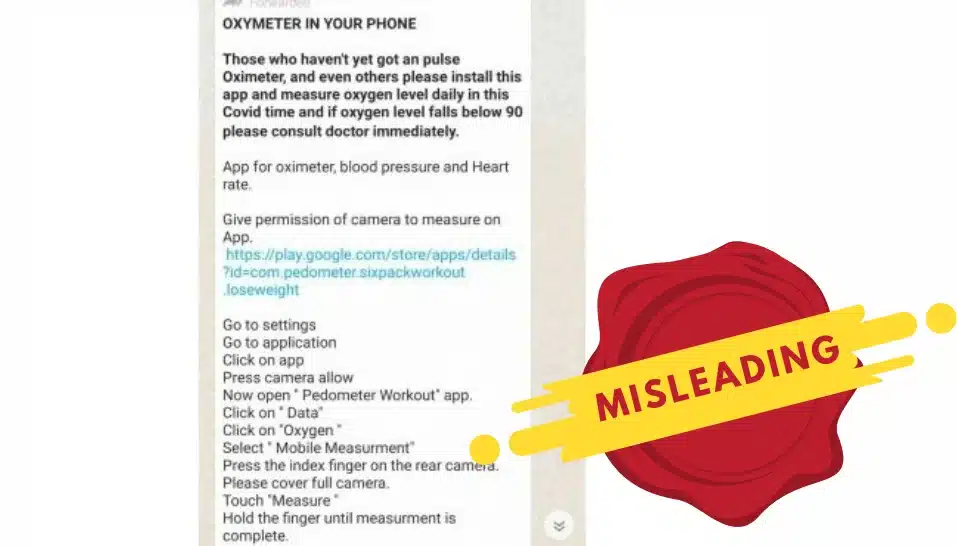A viral WhatsApp message in India is asking people to click on a link to download a free app that monitors blood oxygen levels using one’s phone camera. The pandemic is seeing a surge in fake apps and cyber fraud.
The COVID-19 pandemic has made us more susceptible to fake apps – especially those that offer convenient solutions to help keep the coronavirus infection in at bay. Recently, a viral WhatsApp message claimed that a free app from Google Play Store can check blood oxygen levels using one’s phone camera. All one has to do is click on a link to download the app!
Several unsuspecting WhatsApp users ended up comprising their data security by sharing sensitive biometric data such as fingerprints. The fake app has been taken down by Google. However, the risk of cyber fraud, through malicious links to download fake health apps, remains. Apart from the misuse of the fingerprint that is used for various personal data authentication, there is also the threat of data theft through access to the phone’s storage, gallery, and SMS inbox.
Pandemic pressures
Conversations about the need to track the blood oxygen levels in people suffering from COVID-19 has led to a growing demand for pulse oximeters, the medical device used to monitor oxygen in the body. However, pulse oximeters are currently in short supply, leading to a palpable rise in consumer interest in other alternatives.
Wearable wellness devices, such as Fitbit and Garmin smartwatches, have built-in pulse oximeters. Though they are expensive, they are less accurate than standard pulse oximeters. The manufacturers explicitly state that the devices should not be used for medical purposes.
And then, there are apps that claim to measure one’s blood oxygen levels through one’s phone camera. Research shows that these apps are inaccurate and could give a false sense of security to people.
A study published in the American Journal of Emergency Medicine in 2019 found that three iPhone apps with pulse oximetry function were unreliable in their readings. Another recent study by the Centre for Evidence-Based Medicine at the University of Oxford found that in the context of the current pandemic, these apps are not fit to be used clinically as oximeters.
Unlike conventional pulse oximeters that use red and infrared light wavelengths, smartphones usually only have white light. Also, pulse oximetry devices send light wavelengths through the finger and read the results from a sensor on the other side. Smartphones have to rely on the reflection of the wavelengths as they send and capture the light from the same spot. In other words, apps cannot give an accurate reading of one’s blood oxygen levels.


















Add Comment